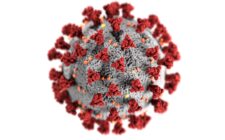What is arrhythmia
Arrhythmia is the disturbances in the electrical conducting system of the heart muscles creating an irregular heart rhythm. In the normal electrical conduction the impulse pass from the SINO ATRIAL node (SA node) located on the right atrium to the atria chambers to contract. Then impulses passes to the ATRIOVENTRICULAR node (AV node) located in between atrium and ventricles. Now from AV node impulses travel to the ventricles to contract. This electrical conduction makes the heart to contract to pump blood. Any disturbances in this electrical impulse distribution will cause arrhythmia (unbalanced or uncharacteristic heartbeat). The increase in the heart beat is called as TACHYCARDIA. The decrease in the heart rate is called as BRADYCARDIA. Any fluctuating or irregular heart beat is called as FIBRILLATION (ATRIAL OR VENTRICULAR FIBRILLAITONS). The normal heart beat range is 70 to 80 beats per minute. In TACHYCARDIA the heart beat rate is more than 100 beats per minute. In BRADYCARDIA the heart beat is less than 60 beats per minute.
What are the risk factors and causes for arrhythmia
-
- Chronic disease of heart –the disturbances in the path of electrical impulse conduction due to damage in the heart muscles by disease of the heart.
-
- Hypertensive disease – increase in blood pressure put more tension on the heart muscle and disturbing the electrical impulses.
-
- Diabetes (type 1 and 2) – increased blood sugar will increase the blood pressure and damage the heart muscles and their electrical conduction.
-
- Chronic kidney diseases – this will have various effects on the heart muscle and blood pressure leading to arrhythmia.
-
- Smoking
-
- Alcohol addiction – alcohol consumption exceeding the limit will cause ATRIAL fibrillations. Easily subsides on alcohol withdrawal.
-
- Drug addiction – certain drugs are not suitable and directly affect the heart rhythms.
-
- Over active thyroid – increase in thyroid hormones has the effect on the heart rhythms.
-
- Increased mental stress – stress makes the symptomatic arousal in the body and put added pressure on the heart and its rhythm.
-
- Medicinal side effects – some drugs are not suitable for certain body condition and affect the heart functions.
-
- Unhealthy food habits – too much of fat in diet will lead to disease of heart and disturbing the heart rhythm.
-
- Coffee addiction – triggers the adrenaline hormone and constricts the blood vessels and increase the pressure and damaging the heart rhythm.
-
- Ageing process – deterioration in the region of the conducting fibers of the heart leading to rhythm disturbances.
-
- Any electrolytic imbalances – this could block the conduction of impulses and proper heart rhythm.
- Genetically transmitted – some valves defects are seen congenitally obstructing the heart function and show irregularity in the heart rhythm.
What are the Classification of arrhythmia
TACHYCARDIA IN ATRIUM:
- ATRIAL fibrillation: This is the speedy or uneven contraction of the atria chambers. This is the most commonly seen arrhythmia, especially in the old ages. In ATRIAL fibrillation the electrical impulses starting from SA node is shot circuited in atria chambers or unsystematically dispersed leading to strong and fast contraction of atria chambers than ventricles.
Many other heart diseases could easily lead to this type. This fibrillation can cause severe other conditions like stroke etc…
-
- ATRIAL flutters: this is the most dangerous type when compared to the fibrillation.
-
- SUPRA VENTRICULAR TACHYCARDIA: this is the rapid increased in the heart beat for continued period of few hours. Here the electrical impulse disturbed above the ventricles level.
- WOLFF PARKINSON WHITE SYNDROME: This is due to the short circuit in the electrical impulse conduction. The heart beat raises abnormally and suddenly. It can lead to sudden death.
TACHYCARDIA IN VENTRICLES:
-
- VENTRICULAR TACHYCARDIA: In this type the electrical impulses start their abnormality from the ventricles. The two types differentiated are UN sustained VT and sustained VT.
-
- VENTRICULAR fibrillation: here the heart rhythm is disturbed due to the improper contraction of the ventricles.
- LONG QT syndrome – is the syndrome seen from birth with the incidence of heart beat irregularities. In ECG graph the QT segment interval is seen lengthened.
BRADYCARDIA: Even the slow conducting heart also causes problems. In this case the heart beat is less than 60 beats per minute. Their classifications are 1) sick sinus: improper electrical impulse or no impulse from the SA node. And 2) conduction blocks: lock near AV node.
Main symptoms of arrhythmia
-
- Experiencing pain in the chest region with discomfort.
-
- Feeling the sensation of tightness in chest region.
-
- Shortening in breathing process due to less oxygen supply by irregular heart beat.
-
- Mental confusion with accompanied by headaches.
-
- Lightheadedness
-
- Fatigue – due to lack of oxygen supply the energy needed for the body is decreased.
-
- Overexcitement – person being more anxious by the heart rhythm disturbance.
-
- Exertion on slight exercise – increase in heart beat abnormally even with simple exercises.
-
- Palpitation – over conscious about the thumping feeling of heart beat in abnormal manner.
-
- Fainting
-
- Change in pulse pattern – pulses tends to be more severe according to the heart rhythm.
-
- Excessive sweating – sweat gland responses are increased by the abnormalities in the heart beat rhythm.
- Disturbances in sleeping – some have sleeping disturbances due to the feel of heart beating severely heard or been aware by any position of sleep.
How to detect arrhythmia
Various examination are done to diagnose which are conditions leading the arrhythmias.
-
- Blood test: the blood samples are collected and tested for their normal contents. The blood test shows the level of essential minerals like potassium and magnesium in blood. Hormone level in blood is also checked. The heart diseases can be easily detected.
-
- Electrocardiogram (ECG) – shows the rhythmic activity and the electrical activity of the heart by using the electrode placements for recording the impulse conduction. It helps to determine the arrhythmia types by the variation in the chart pattern of ECG. Also confirms the presence of the other diseases in heart.
-
- Echocardiogram (ECHO) – shows the clear view of the pumping action of the heart.
-
- Chest x-rays shows the size of heart and the defects of valves of the heart.
-
- Tilt table test
- Electrophysiological test – injecting a catheter via groin or neck region to detect the heart condition and determining the treatment strategies.
The most important complications of arrhythmia are
-
- Stroke
-
- Heart failure
- Alzheimer’s disease.
How to treat arrhythmia:
MEDICATIONS are not the best choice as it doesn`t work fully. Some anti arrhythmia drugs are useful and some drugs to reduce the heart beat should be taken regularly. PACEMAKERS: Pacemakers will maintain the rhythm of the heart beat if the natural rhythm fails. Pacemakers are the tiny piece of equipment placed under skin to regulate heart beat. CARDIOVERSION: this is the applying of the electrical shock to obtain change the irregular rhythm of heart to normal phase. Usually surgeries are not involved, only in rare cases due to severity of the conditions a procedure called CRYOMAZE procedure are undergone. Life style alteration is very important among all other. Lot of stress reducing programs should be implemented in daily life activities.
Conclusion:
Arrhythmia is now became one of the serious condition all over the world. It is the root cause for the all other heart disease and stroke conditions. In surgery conditions, rehabilitation will make the patient more comfortable and quick recovery is possible. The risk factor for and of the arrhythmia can be controlled and managed by various technique and technology.





